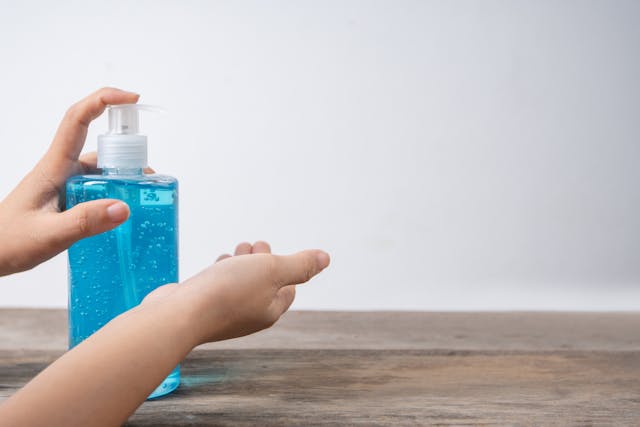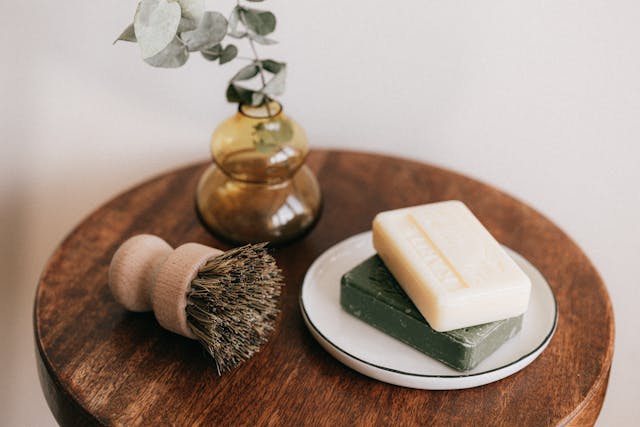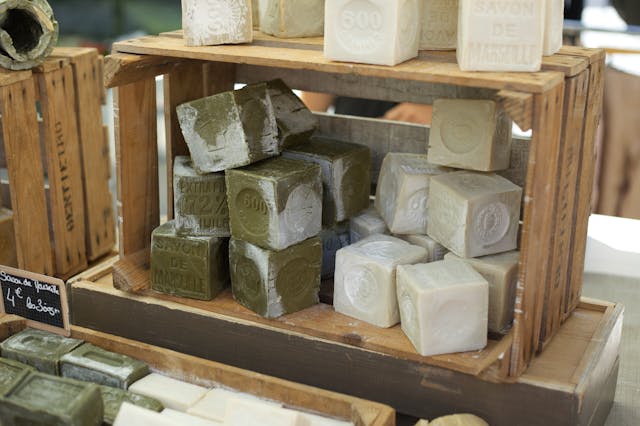The debate between bar soap and liquid soap has been a point of discussion for consumers concerned with health, hygiene, and environmental impact. Liquid soap, introduced in the late 1800s, has since risen in popularity for its dispensing convenience and perceived hygienic properties. In contrast, traditional bar soaps have been in use for centuries, commended for their simplicity, cost-effectiveness, and minimal packaging. Both forms promise effectiveness in cleansing and removing pathogens, yet they each carry distinct advantages and preferences that play a role in consumer choice.
Environmental considerations factor into the bar versus liquid soap conversation. Bar soaps typically come with less packaging and have a lower water content compared to liquid soaps, leading to a smaller carbon footprint during transportation. On the other hand, liquid soaps, often packed in plastic bottles with pumps, present a different set of benefits and environmental considerations. They are favored in shared spaces due to the ease of use and reduced contact with the product, which can assuage concerns about the transfer of germs.
Ingredients and cost are also pivotal in determining consumer preference. Bar soaps can be formulated with fewer chemicals and may be seen as a more ‘pure’ option, albeit sometimes at the price of convenience and ease of use. Liquid soaps provide a diverse range of varieties, including moisturizing and antibacterial options, catering to a broader scope of skincare needs. Despite each having inherent benefits, consumers are tasked with determining which best aligns with their personal, health, and environmental priorities.
Composition and Characteristics
When comparing bar soap to liquid soap, the composition and characteristics of each play a vital role in their effectiveness and impact on skin health.
Soap Base and Ingredients
Bar soaps and liquid soaps have different bases that contribute to their form and function. The foundation of bar soap is typically a combination of sodium hydroxide (lye) and natural ingredients such as fats or vegetable oils, including coconut oil. Some bar soaps incorporate glycerin, which acts as a moisturizer. Liquid soap, on the other hand, is made with potassium hydroxide, a different type of lye, and it often contains added minerals and moisturizing agents due to its water-based formulation.
Surfactants and Moisturizers
Surfactants are essential in both types of soap for their ability to trap and remove dirt, bacteria, germs, and viruses. They work by reducing surface tension, effectively allowing the soap to interact with oil and water. Moisturizers are often added to both bar and liquid soaps to offset the drying effects of surfactants. Liquid soaps can be less drying, as they may include additional moisturizing compounds like glycerin or aloe, making them a better choice for individuals with dry or sensitive skin.
pH Levels and Skin Health
The pH level of soap is an important factor in skincare. Typically, bar soap has a higher pH, which can be more stripping to the skin’s natural oils, leading to dryness. Liquid soap usually has a closer pH level to that of the skin, which helps maintain the skin’s natural barrier. Both bar and liquid soaps often contain various scents and natural ingredients designed to provide a pleasant user experience and additional skincare benefits.
Production and Environmental Impact
In the debate between bar soap and liquid soap, their production and environmental impact are critical factors that differentiate them. This section examines how these soaps are made, the materials used for packaging, and their effect on carbon footprint and land use.
Manufacturing Processes
The manufacturing process of liquid soap is more complex and energy-intensive than that of bar soap. Liquids require the blend of water with synthetic detergents, usually processed at higher temperatures. In contrast, bar soaps are typically created through a cold process method, overwhelmingly consuming less energy. They are also less reliant on synthetic ingredients, leaning more towards natural oils and fats, which simplifies the production process.
Packaging Materials
Packaging has significant environmental implications. Liquid soaps commonly come in plastic bottles. The production of these bottles is resource-intensive, often involving:
- Non-renewable petroleum-based materials
- Abundant energy and water use
- Difficulty in recycling due to complex plastic compounds
In contrast, bar soaps often use minimal packaging, typically wrapped in paper or cardboard, materials that are:
- More frequently made from recycled content
- Easier to recycle
- Biodegradable, assuming no plastic or metallic coatings are present
Carbon Footprint and Land Use
The impact on carbon footprint and land use is considerable when contrasting bar and liquid soaps. Studies indicate that bar soaps generally have a lower carbon footprint, attributed to:
- Minimalistic packaging
- Fewer chemical additives
- Lower energy consumption in production
Moreover, the land use associated with the sustainability of soap products favors bar soaps. Eco-friendly practices in sourcing natural soap ingredients often result in less land being used than the practices involved in creating the more synthetic liquid soaps. Bar soaps’ simple ingredient list and reduced plastic reliance cement their standing as the more sustainable option.
User Experience and Preferences
The choice between bar soap and liquid soap often comes down to personal preferences shaped by factors such as texture, scent, and ease of use. These elements significantly impact the user experience and influence an individual’s decision to integrate the product into their daily skincare routine.
Texture and Consistency
Bar soap typically provides a firmer texture and is considered effective for exfoliating the skin. Users may find the sensation of solid soap in their hands satisfying as they build a lather. In contrast, liquid soap might feel slimy to some, but it typically produces a rich lather more effortlessly. The body wash or shower gels fall under the liquid category and often feature a gel-like or creamy consistency, appealing to those who prefer a smoother application.
- Bar Soap: Firm, may become mushy if left wet
- Liquid Soap: Smooth, consistent texture
Fragrance and Variety
The variety of fragrances available differs between bar and liquid soaps, with a trend of liquid soaps offering a broader range of scents due to their formulation. Liquid soaps can easily integrate a multitude of fragrance oils and essences, serving those who are specific about the scent profile in their bathroom or hand-washing stations. Bar soaps, albeit available in varied scents, have a more natural aroma that some users prefer for its subtlety.
- Bar Soap: Natural scents, subtler fragrance
- Liquid Soap: Wide range of synthetic and natural scents
Convenience and Accessibility
When considering convenience and accessibility, liquid soaps are often seen as more user-friendly, especially in shared spaces or public bathrooms, due to their pump or squeeze bottle mechanisms. Bar soaps can become slippery and are perceived by some as less hygienic. They also require a soap dish to drain and can become mushy if left in standing water. Liquid soap dispensers, in contrast, provide a cleaner and more convenient method of soap distribution with minimal mess.
- Bar Soap: Requires a soap dish, can slip and fall
- Liquid Soap: Convenient dispensers, considered more hygienic
Health and Hygiene
When selecting soap for daily use, it is crucial to consider its effectiveness against bacteria and germs and the impact on skin health. The choice between bar soap and liquid soap can influence hygiene practices.
Antibacterial Properties
Bar Soap:
- Traditional bar soaps have a long history of efficient cleaning and are often considered sufficient for removing dirt and microorganisms from the skin. They work by mechanically removing germs and bacteria when used in conjunction with thorough hand washing techniques.
- Recent studies have shown that even non-antibacterial bar soap can be effective in killing germs when used properly.
Liquid Soap:
- Liquid soaps may contain additional antibacterial ingredients, which are marketed to kill more bacteria and pathogens.
- However, the effectiveness of antibacterial liquid soaps over non-antibacterial formulations in preventing illness is currently under debate among health experts.
Note on Antibacterial Agents: Overuse of antibacterial agents in soaps can lead to the development of antibiotic-resistant bacteria, which is a growing concern in health communities.
Hygiene Practices During Illness
Hand Washing:
- During illness, especially with concerns like COVID-19, hand washing with soap and water for at least 20 seconds becomes paramount. Both bar and liquid soaps are effective if used correctly.
- The CDC emphasizes technique over the type of soap, recommending vigorous scrubbing of all parts of the hands, including under the nails.
Shared Soap:
- While some may worry about the hygiene of shared bar soap, studies suggest that pathogenic microorganisms are unlikely to transfer from bar soap and cause infection.
- Liquid soap in dispensers provides minimal contact with the product itself, which might reassure those concerned about cross-contamination during illnesses.
In terms of hygiene, both bar and liquid soaps can be part of effective hand washing to maintain health, providing they are used following correct hand washing guidelines. It is not the form of the soap but the manner in which it is used that most significantly reduces the spread of germs, bacteria, fungi, and viruses like COVID-19.
Market Analysis
This section delves into the consuming patterns regarding bar and liquid soaps and examines the driving forces shaping the current market. It will address consumer preferences related to scent, beauty, and skincare, as well as explore the overarching dynamics of the soap market.
Consumer Trends
Consumers increasingly prioritize personal hygiene and skincare, which has influenced their purchasing decisions in the soap market. Research indicates a growing inclination toward soaps with added skincare benefits, such as moisturizers or essential oils, and a clear preference for appealing fragrances and stylish packaging that complement their lifestyle.
- Skincare & Beauty: Consumers seek products that offer supplementary skincare benefits, such as exfoliation, moisturizing, and are made with natural ingredients.
- Scent: Fragrance remains a significant factor, with a tendency toward organic and long-lasting scents that align with personal style.
- Style: Packaging aesthetics also play a role, with many opting for designs that reflect their individual tastes and values.
Soap Market Dynamics
The soap market is experiencing growth, with a compound annual growth rate (CAGR) forecasted for both bar and liquid soaps. Market research provides insights into this expansion:
- Bar Soap Market Dynamics: According to the data, the bar soap market was valued at USD 28.27 billion in 2021. It’s expected to grow from USD 29.16 billion in 2022 to USD 38.42 billion by 2029, with a CAGR of 4.02%.
- Liquid Soap Market Dynamics: For liquid soap, the market was valued at an estimated USD 30.1 billion in 2022, with projections to advance at a 4.6% CAGR from 2023 to 2030.
| Year | Estimated Bar Soap Market Value (USD) | Estimated Liquid Soap Market Value (USD) | Projected Growth |
|---|---|---|---|
| 2022 | 29.16 billion | 30.1 billion | – |
| 2030 | 38.42 billion (projection) | – | 4.02% CAGR |
| 2033 | 45.08 billion (projection) | – | 4.04% CAGR |
These growth trajectories indicate a robust and competitive market shaped by consumer demands for fragrance options, skincare enhancements, and environmentally conscious products.
Economic Considerations
When comparing bar and liquid soaps from an economic perspective, consumers are primarily concerned with cost efficiency and waste reduction.
Cost Efficiency
The cost of soap is influenced by multiple factors, including usage rate and price per unit. Bar soaps tend to be less expensive on a per-use basis. A bar soap can actually last longer when used properly, despite the upfront price sometimes being similar to liquid soaps. Liquid soap may lead to overuse due to pump dispensers, which dispense more soap than necessary for effective cleaning.
Waste Reduction
Waste reduction is a substantial economic concern, particularly regarding packaging. Bar soaps are typically packaged in paper or cardboard, which are more likely to be biodegradable or recyclable than plastic bottles. These materials generally create less waste than liquid soap containers. Liquid soaps come predominantly in plastic bottles, which add to the amount of plastic waste that requires processing and can incur higher waste management costs. Moreover, the production of these plastic containers consumes more energy, which compounds their environmental and economic impact.
Specialized Uses and Recommendations
Choosing the right type of soap can significantly impact skin health and public safety. Decisions should be guided by skin type, beauty routines, and the necessity of preventing illness.
Sensitive Skin Solutions
Individuals with sensitive skin often face the challenge of finding soaps that cleanse without exacerbating skin irritation or causing dryness. Bar soaps can be advantageous as many contain fewer preservatives and ingredients, which may reduce the risk of an allergic reaction or irritation. However, one should look for products labeled “hypoallergenic” or “for sensitive skin” as these typically omit harsh chemicals. On the other hand, liquid soaps may include moisturizers that help preserve the skin’s natural moisture.
- Recommended for sensitive skin:
- Hypoallergenic bar soaps with minimal ingredients
- Fragrance-free liquid soaps with added moisturizers
Beauty and Skincare
For beauty and skincare enthusiasts, the choice between bar and liquid soap hinges on their effect on the skin’s health and the ability to remove makeup effectively. Liquid soaps are generally gentler and can be found in formulations that include exfoliants for smoother skin or ingredients for treating acne-prone skin. Bar soaps, while useful for cleansing, might strip away essential oils, which can be counterproductive for individuals seeking to maintain a radiant complexion or those with dry skin.
- Skincare tips:
- Use gentle liquid cleansers with added skincare benefits for daily face wash.
- Opt for bar soaps with natural oils for body cleansing without over-drying.
Public Health and Safety
During the COVID-19 pandemic, soap has become a centerpiece of public health and safety. Proper handwashing with either bar or liquid soap is effective against viruses like COVID-19. However, liquid soap dispensers are often preferred in public settings to minimize contact between users. Furthermore, the pandemic has underscored the importance of personal hygiene in conjunction with other preventive measures such as wearing face masks and practicing social distancing. Regular handwashing is not only a key safety measure but also contributes positively to mental health by providing a sense of control and diligence in one’s personal hygiene routine.
- Safety measures:
- Consider liquid soap with pump dispensers for shared spaces to reduce cross-contamination.
- Encourage frequent handwashing with soap that cleanses effectively against pathogens.
Innovations and Alternatives
The soap industry continues to evolve with advancements in technology and a surge of new products aimed at improving user experience and environmental sustainability.
Technological Advances in Soap
Technological innovation has significantly impacted the production and formulation of both bar and liquid soaps. Surfactants, key components that reduce surface tension and improve cleaning efficiency, have seen advancements, leading to soaps that are more effective at cleaning while being gentle on the skin. In bar soaps, technological enhancements have led to the reduction of lye, a historically common but harsh ingredient. Today’s bar soaps often boast a more balanced pH that is kinder to the skin.
For liquid soaps, technology has introduced more sophisticated detergents with enhanced moisturizing properties. The development of specialized pumps and no-touch dispensers have also made liquid soaps more convenient and hygienic to use, potentially reducing the residue buildup that some bar soaps leave behind.
Emerging Products and Practices
New products in the soap space include formulations that prioritize skin care alongside cleansing. Bar soaps now utilize various emollients and creams responsible for moisturizing the skin, and some even infuse essential oils or exfoliants to provide a spa-like experience.
- Liquid soaps are increasingly available in eco-friendly packaging or as refillable options, reducing plastic waste.
- Innovative bar soaps have entered the market, such as those embedded with layers of different ingredients, offering a multi-use, all-in-one solution.
These suds science advancements promote both efficiency in cleaning and a heightened user experience, marking an exciting era for personal hygiene products.
Conclusion
In the debate between bar soap and liquid soap, each presents its own set of advantages regarding cost-effectiveness, environmental impact, ingredients, and usability.
Bar soaps are:
- Generally more cost-effective
- Often less wasteful in packaging
- Potentially containing fewer preservatives
Liquid soaps offer:
- Convenience with pump dispensers
- Typically considered more hygienic in shared spaces
- A variety of formulas catering to different skin types
Both bar and liquid soaps are effective at removing pathogens when used correctly. The key factors influencing an individual’s choice may include personal preference, skin type, and eco-consciousness.
Consumers should scrutinize ingredients, as certain soaps might contain harsh chemicals or unnecessary additives. A soap’s ability to clean is not necessarily tied to its form, but rather its substance and proper use.
It’s also advisable for consumers to look beyond marketing claims and focus on science-backed evidence when evaluating soap efficacy. Ultimately, the decision rests with the consumer, with considerations of personal and environmental health as deciding factors.








